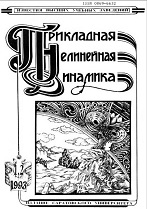|
This article is cited in 2 scientific papers (total in 2 papers)
INNOVATIONS IN APPLIED PHYSICS
Study of miniaturized low-voltage backward-wave oscillator with a planar slow-wave structure
N. M. Ryskinab, R. A. Torgashovba, A. I. Benedika
a Saratov State University
b Kotel'nikov Institute of Radio Engineering and Electronics, Russian Academy of Sciences, Moscow
Abstract:
The development of the terahertz frequency range is one of the priority problems of modern vacuum microwave electronics. For increasing power and efficiency of such devices, it is favorable to use spatially developed slow-wave structures (SWSs) and electron beams with a large cross section. For miniaturization of vacuum-tube devices, reducing of the accelerating voltage becomes a problem of principal importance. In this respect, planar SWSs on dielectric substrates are very promising. In this paper, the results of study of a miniaturized low-voltage millimeter-band backward-wave oscillator (BWO) with a sheet electron beam and planar interdigital SWS on silica substrate are presented. Calculations of the electromagnetic characteristics of the SWS showed that it has large slow-down factor and relatively wide passband. Frequency tuning in the 60–75 GHz range is provided at relatively low operation voltage 1.0–3.5 kV. The coupling impedance averaged over the $500\times50\mu$m$^2$ beam cross section, increases with frequency from 2 to 40 $\Omega$ in the operating frequency range. The beam is placed at 50$\mu$m distance from the metallized surface of the SWS. Based on these results, the parameters required for computer simulation were calculated. The well-known equations of the 1D nonstationary BWO theory considering the space charge forces and cold losses are used for the computer simulation. Self-excitation current for the BWO with SWS consisting of 50 periods was calculated. The starting current is about 10–30 mA, which corresponds to 50-100 A/cm$^2$ current density. The output power attains of 1–2W for the current values nоt exceeding 50 mA. The BWO studied in this work can be used as a driver oscillator for a traveling-wave tube amplifier with planar SWS.
Keywords:
Vacuum microelectronics, millimeter band, backward-wave oscillator, interdigital slow wave structure, sheet electron beam.
Received: 14.07.2017
Citation:
N. M. Ryskin, R. A. Torgashov, A. I. Benedik, “Study of miniaturized low-voltage backward-wave oscillator with a planar slow-wave structure”, Izvestiya VUZ. Applied Nonlinear Dynamics, 25:5 (2017), 35–46
Linking options:
https://www.mathnet.ru/eng/ivp67 https://www.mathnet.ru/eng/ivp/v25/i5/p35
|

| Statistics & downloads: |
| Abstract page: | 92 | | Full-text PDF : | 43 |
|




 Contact us:
Contact us: Terms of Use
Terms of Use
 Registration to the website
Registration to the website Logotypes
Logotypes








 Citation in format
Citation in format 
